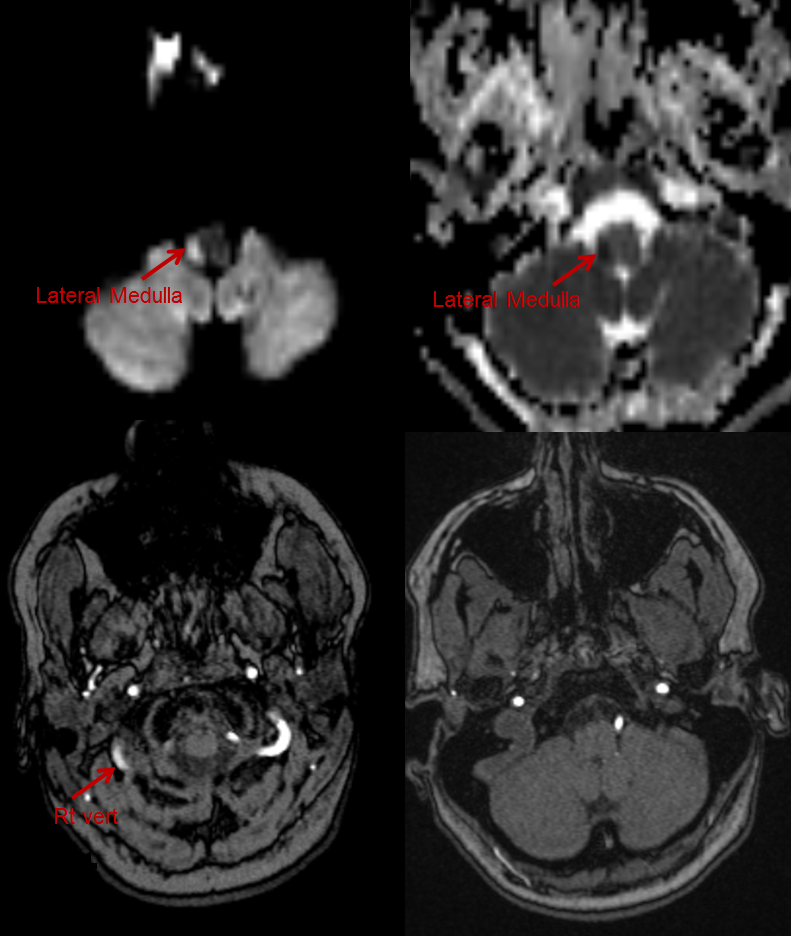

For example, duplicated SCAs and AICAs are just two adjacent perforators, which persisted in co-dominance of cerebellar supply. This simple concept explains ALL variations seen in the area. Others stay relatively small and are thus “limited” to brainstem supply. As the cerebellum develops, some of these transverse channels enlarge to capture the cortical territory of the cerebellum - thus becoming AICAs and SCAs. As explained above, one can think of the basilar as a longitudinal channel, with multiple trasverse channels. Understanding the embryology of vertebrobasilar circulation helps explain many variations seen in this pattern. Radiculomedullopial arteries are those which happen to supply both anterior and posterior spinal systems simultaneously, sometimes via a coronary artery, and at other times via separate connections to the posterior spinal system. For a more complete discussion of spinal vasculature, see Spinal Vascular Anatomy section, particularly Spinal Arterial Anatomy.Ĭlassical dispostion depicts AICA and SCA arising from the basilar artery, in addition to multiple short basilar perforators whose supply is limited to the brainstem.

Radiculopial arteries are those which supply the posterior spinal system. In practice, as you know, the radiculomedullary and radiculopial arteries are fewer, and may arise from longitudinal vessels other than the vert. The entire spinal cord system is supplied via segmental radiculomedullary arteries, which connect the vertebral artery to the anterior spinal artery. A number of perforating arteries into the substance of the cord exist when arising from the anterior spinal artery and penetrating through the ventral cord sulcus, they are named “sulco-comissural” arteries. The anterior and posterior spinal systems are connected by anastomoses running along the circumference of the cord, although known as “coronary” arteries, are conceptually quite clear. Our mission is to help you improve your basic knowledge of any subject and test prep using online quizzes and practice tests.The image on the LEFT represents cervical spinal cord arterial supply, which consists of the anterior spinal artery and a paired, loose network of posterolateral vessels known as the posterior spinal arteries, and which are conceptually represented here as contiguous vessels (which is at least mostly true in the cervical spine). Lateral medullary syndrome (also known as Wallenberg syndrome, posterior inferior cerebellar artery. Brainstem find the lesion questions have dogged USMLE Step 1 exam-takers for years. 12K+ Practice Tests / Practice Exams and Online Quizzes.ġ.2 Million+ Multiple Choice Test Questions / Practice Questionsħ00+ Subjects Covering All Test Prep, Competitive Exams, Certification Exams, Entrance Exams, & School / College Exams. The symptoms of Wallenberg syndrome vary depending on the cause and location of the brain damage. Lateral medullary syndrome is also called Wallenberg syndrome and posterior inferior cerebellar artery syndrome. Lateral medullary infarction (LMI) is a vascular disease of. Posterior inferior cerebellar artery Cerebrovascular System: Anatomy. Check pica syndrome translations into German.Īccording to GARD, the most common symptoms include: Trouble swallowing (dysphagia) Feeling hoarse. Step 1 Diagnosis of a parkinsonian syndrome Bradykinesia (slow to. It is characterized by sensory deficits affecting the trunk and extremities on the opposite side of the infarct, and by sensory and motor deficits affecting the face and cranial nerves on the same side of the infarct. Look through examples of pica syndrome translation in sentences, listen to pronunciation and learn grammar. Infarctions of the PICA can cause Wallenberg’s syndrome, an ischaemia of the dorso-lateral medulla oblongata. Posterior inferior cerebellar artery (lateral medullary syndrome, Wallenberg syndrome).


Dysphagia after LMI appears at the oropharyngeal phase of swallowing 5. Lateral medullary (Wallenberg) syndrome (see below), which occurs with PICA strokes, is not evident, ruling out choice D. Vertebral Artery (VA) and Posterior Inferior Cerebellar Artery (PICA). Pica Pica is an eating disorder characterized by a desire or recurrent compulsion to eat substances that are nonnutritive and not food. Features common with lateral medullary syndrome. It can be challenging to convert complex sensory and motor symptoms.


 0 kommentar(er)
0 kommentar(er)
